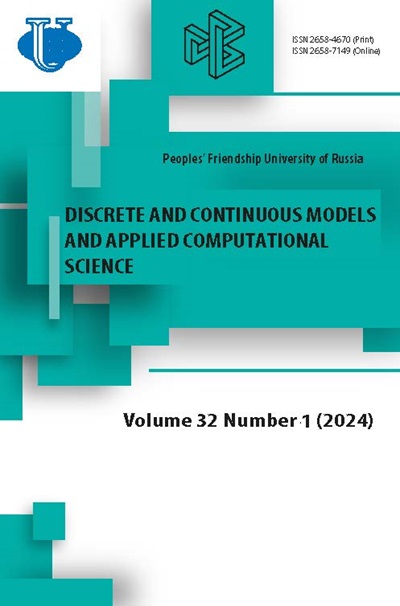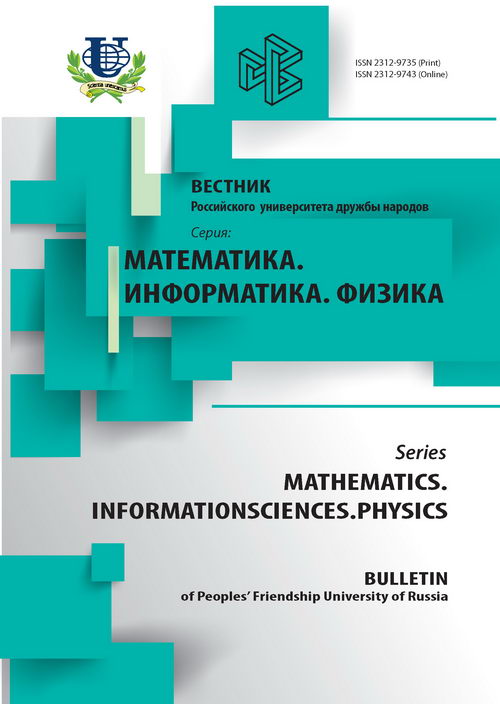Приближённое расширение лоренцевой симметрии до конформной в пределе сверхвысоких энергий
- Авторы: Рудой Ю.Г.1, Вернигора И.А.1
-
Учреждения:
- Российский университет дружбы народов
- Выпуск: № 3 (2014)
- Страницы: 164-170
- Раздел: Статьи
- URL: https://journals.rudn.ru/miph/article/view/8242
Цитировать
Полный текст
Аннотация
Предложено теоретико-групповое обоснование оригинального подхода Киржница и Чечина, позволяющего первичным протонам космических лучей сверхвысоких энергий преодолеть энергетический предел Грейзена-Зацепина-Кузьмина (около 50 ЕэВ) в рамках обычных представлений о физической природе внегалактических источников. Однако экспериментальный статус предела ГЗК в настоящее время остаётся не вполне определённым ввиду редкости событий в указанной области энергий, а также трудностью их надёжной идентификации. В связи с этим представляется целесообразным предложить в качестве одного из возможных теоретическое обоснование этого предела без привлечения «новой физики» (например, космических струн) за счёт некоторого расширения стандартной лоренцевской кинематики в СТО. Показано, что явный вид множителя, деформирующего лоренцев инвариант в пространстве энергий-импульсов, может быть установлен на основе приближённого перехода от лоренцевой симметрии к конформной при значениях лоренц-фактора порядка 10 10-10 11. Технически мы просто заменяем феноменологический подход Киржница и Чечина более обоснованным разложением специального конформного преобразования с использованием обратного лоренц-фактора 1/y (учитывая, что в кинематике любых массивных частиц появляются «конформные» поправки по степеням 1/y ,отсутствующие для безмассовых частиц в пределе 1/y =0). При этом, как выяснилось, все улучшенные кинематические возможности необходимы, чтобы разумно воспроизвести наблюдаемые данные по доступным источникам внегалактических космических лучей.
Об авторах
Юрий Григорьевич Рудой
Российский университет дружбы народов
Email: rudikar@mail.ru
Кафедра теоретической физики и механики
Ирина Александровна Вернигора
Российский университет дружбы народов
Email: wenera-83@mail.ru
Кафедра теоретической физики и механики
Список литературы
- Greisen K. End to the Cosmic-Ray Spectrum? // Physical Review Letters. - 1966. - Vol. 16, No 17. - Pp. 748-750.
- Зацепин Г.Т., Кузьмин В.А. О верхней границе спектра космических лучей // Письма в ЖЭТФ. - 1966. - Т. 4. - С. 114-116.
- Панасюк М.И. Странники Вселенной, или эхо Большого взрыва. - Фрязино: Век 2, 2005. - 272 с.
- Засов А.В., Постнов К.А. Общая астрофизика. - Фрязино: Век 2, 2006.
- Поиск внегалактических источников космических лучей в области предельных энергий (ВККЛ-30, СПб, июль 2008) / А.А. Иванов, С.П. Кнуренко, И.М. Правдин и др. // Известия РАН, сер. Физическая. - 2009. - Т. 73, № 5. - С. 581-583.
- Olinto A.V., Adams H.J., Dermer C.D. et al. White Paper on Ultra-High Energy Cosmic Rays. - 2009. - http://uhecr.uchicago.edu/2009.
- Березинский В.С. Эффект Грейзена-Зацепина--Кузьмина // Труды ВККЛ31, Москва, МГУ, 5-9 июля 2010. - 2010.
- Stecker F.W. Effect of Photomeson Production by the Universal Radiation Field on the High-Energy Cosmic Rays // Physical Review Letters. - 1968. - Vol. 21, No 14. - Pp. 1016-1018.
- Птускин В. С. О происхождении галактических космических лучей // Успехи физических наук. - 2007. - Т. 177, № 5. - С. 558-565.
- Berezinsky V.S. Ultra-High Energy Cosmic Rays // Nuclear Physics B.: Proc. Suppl. - 2000. - Vol. 81. - Pp. 311-324.
- Киржниц Д.А., Чечин В.А. Космические лучи сверхвысоких энергий и возможное обобщение релятивистской теории // Ядерная физика. - 1972. - Т. 15, № 5. - С. 1051-1058.
- Coleman S., Glashow S.L. High-Energy Tests of Lorentz Invariance // Phys. Rev. D. - 1999. - Vol. 59. - P. 116008.
- Gonzalez-Mestres L. Deformed Lorentz Symmetry and High-Energy Astrophysics // 2000. Proc. 26th ICRC. - 1999. - arXiv: physics/0003080v1.
- Scully S. T., Stecker F. W. Lorentz Invariance Violation and the Observed Spectrum of Ultrahigh Energy Cosmic Rays. - arXiv: astro-ph/0811.2230v4. ArXiv: astro-ph/0811.2230v4.
- Jacobson T., Liberati S., Mattingly D. Astrophysical Bounds on Planck Suppressed Lorentz Violation. - arXiv:hep-ph/0407370v1. ArXiv:hep-ph/0407370v1.
















